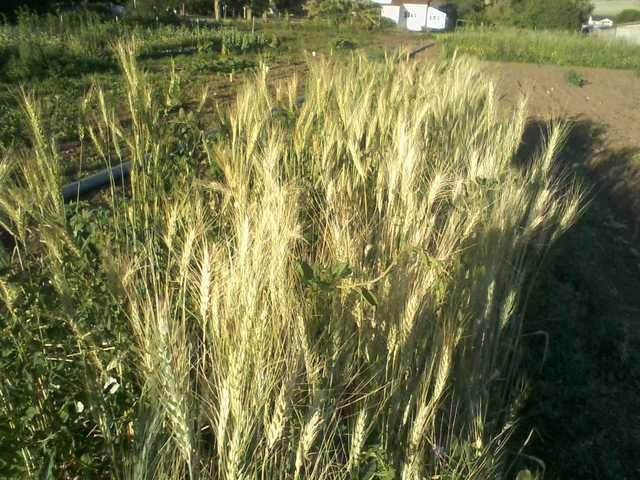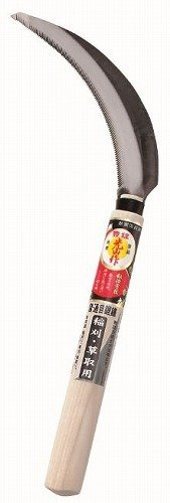
 1
1




I make a Maple Syrup instructional movie! Check it out HERE
SKIP books, get 'em while they're hot!!! Skills to Inherit Property
See me in a movie building a massive wood staircase:Low Tech Lab Movie

 4
4




Mike Jay wrote:a gentleman in England who plants a small plot in rows within his patch of garden. I can't imagine doing that on a 50' by 60' field though. [...] So, how would you guys recommend that I get the seeds in the ground?






 So if you say the EarthWay will work with grain seeds, it's a no brainer. They seem to run $75-90 on craigslist around here so I'll keep my eyes open. Have you tried any other brands with good or bad results?
So if you say the EarthWay will work with grain seeds, it's a no brainer. They seem to run $75-90 on craigslist around here so I'll keep my eyes open. Have you tried any other brands with good or bad results?I make a Maple Syrup instructional movie! Check it out HERE
SKIP books, get 'em while they're hot!!! Skills to Inherit Property
See me in a movie building a massive wood staircase:Low Tech Lab Movie




 1
1











 3
3




For more information about old-fashioned biological agriculture please visit: www.agriculturesolutions.wordpress.com -or- www.worldagriculturesolutions.com -or- send your questions to: Agriculture Solutions, 413 Cedar Drive, Moon Township, Pennsylvania, 15108 USA -- or -- send an e-mail to: Eric Koperek = erickoperek@gmail.com





Mike Jay wrote:Have you tried any other brands with good or bad results?





I make a Maple Syrup instructional movie! Check it out HERE
SKIP books, get 'em while they're hot!!! Skills to Inherit Property
See me in a movie building a massive wood staircase:Low Tech Lab Movie















I make a Maple Syrup instructional movie! Check it out HERE
SKIP books, get 'em while they're hot!!! Skills to Inherit Property
See me in a movie building a massive wood staircase:Low Tech Lab Movie









Mike Jay wrote:the wheat farmer tradition of "planting into moisture".




I make a Maple Syrup instructional movie! Check it out HERE
SKIP books, get 'em while they're hot!!! Skills to Inherit Property
See me in a movie building a massive wood staircase:Low Tech Lab Movie













 RULE: Always mow before rototilling. Never rototill any vegetation higher than your rototiller tines (6 or 8 inches). Mowing prevents grass and weeds from clogging rototiller tines.
RULE: Always mow before rototilling. Never rototill any vegetation higher than your rototiller tines (6 or 8 inches). Mowing prevents grass and weeds from clogging rototiller tines.
For more information about old-fashioned biological agriculture please visit: www.agriculturesolutions.wordpress.com -or- www.worldagriculturesolutions.com -or- send your questions to: Agriculture Solutions, 413 Cedar Drive, Moon Township, Pennsylvania, 15108 USA -- or -- send an e-mail to: Eric Koperek = erickoperek@gmail.com




I make a Maple Syrup instructional movie! Check it out HERE
SKIP books, get 'em while they're hot!!! Skills to Inherit Property
See me in a movie building a massive wood staircase:Low Tech Lab Movie




 1
1




I make a Maple Syrup instructional movie! Check it out HERE
SKIP books, get 'em while they're hot!!! Skills to Inherit Property
See me in a movie building a massive wood staircase:Low Tech Lab Movie
 1
1




 Naked seeded oats are a good choice. Austrian farmers have planted hull-less oats (for oatmeal) and hulled oats (for animal food) since the Middle Ages. Look for naked oat varieties that are HAIRLESS as this makes processing much more convenient.
Naked seeded oats are a good choice. Austrian farmers have planted hull-less oats (for oatmeal) and hulled oats (for animal food) since the Middle Ages. Look for naked oat varieties that are HAIRLESS as this makes processing much more convenient.
For more information about old-fashioned biological agriculture please visit: www.agriculturesolutions.wordpress.com -or- www.worldagriculturesolutions.com -or- send your questions to: Agriculture Solutions, 413 Cedar Drive, Moon Township, Pennsylvania, 15108 USA -- or -- send an e-mail to: Eric Koperek = erickoperek@gmail.com




 Do you think I'd still be able to grow winter wheat at these temperatures?
Do you think I'd still be able to grow winter wheat at these temperatures?
 Thanks!!
Thanks!!
I make a Maple Syrup instructional movie! Check it out HERE
SKIP books, get 'em while they're hot!!! Skills to Inherit Property
See me in a movie building a massive wood staircase:Low Tech Lab Movie





Works at a residential alternative high school in the Himalayas SECMOL.org . "Back home" is Cape Cod, E Coast USA.




Best luck: satisfaction
Greatest curse, greed




Mike Jay wrote:Thanks Eric, that is some more wonderful information. I believe we are a fair bit colder here than in Austria though. I don't have great data for the whole world but one site I found lists the average January temps in Vienna around 0C. My area is around -8C. I don't know where in Austria you are so maybe Vienna is the warm spot
Do you think I'd still be able to grow winter wheat at these temperatures?
 2
2








Best luck: satisfaction
Greatest curse, greed








Best luck: satisfaction
Greatest curse, greed
 2
2








Best luck: satisfaction
Greatest curse, greed










Visit Redhawk's soil series: https://permies.com/wiki/redhawk-soil
How permies.com works: https://permies.com/wiki/34193/permies-works-links-threads




I make a Maple Syrup instructional movie! Check it out HERE
SKIP books, get 'em while they're hot!!! Skills to Inherit Property
See me in a movie building a massive wood staircase:Low Tech Lab Movie

| I agree. Here's the link: http://stoves2.com |



